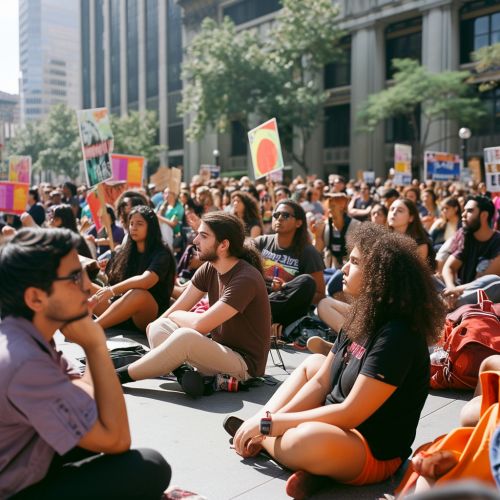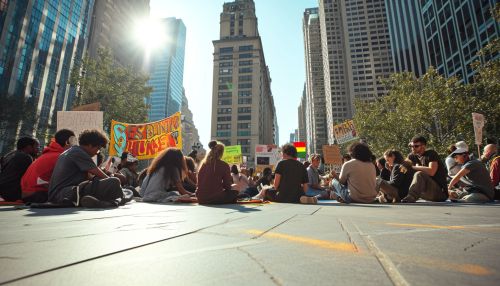Sit-in
History
The term "sit-in" refers to a form of protest that involves occupying a place and refusing to leave. The sit-in has been a popular form of protest throughout history, used by various groups to demand change and draw attention to their cause. The first recorded sit-in protest took place in 1939 when African American attorney Samuel Tucker organized a sit-in at the then-segregated Alexandria, Virginia, library.


Civil Rights Movement
During the Civil Rights Movement in the United States, sit-ins became a powerful tool for challenging segregation. The most famous of these sit-ins took place in 1960 at a Woolworth's lunch counter in Greensboro, North Carolina, where four African American college students sat at the counter and requested service, which was denied due to their race. This event sparked a wave of sit-ins across the country, leading to the eventual desegregation of Woolworth's lunch counters and other public facilities.
Tactics and Strategies
Sit-ins are a form of nonviolent resistance, a strategy often used in civil disobedience movements. Participants occupy a space, refusing to move until their demands are met or until they are forcibly removed. This tactic is designed to disrupt normal operations and draw attention to the protesters' cause. Sit-ins are often organized in places that are symbolic of the issue being protested, such as government buildings, corporate headquarters, or public spaces.
Impact and Legacy
The impact of sit-ins as a protest tactic is significant. They have been used to effect change in a variety of social and political contexts, from the Civil Rights Movement in the United States to the Arab Spring protests in the Middle East. The legacy of sit-ins continues today, with protesters using the tactic to draw attention to issues such as climate change, economic inequality, and police brutality.
